What Is the Main Benefit of Aloe Vera: In-Depth Review
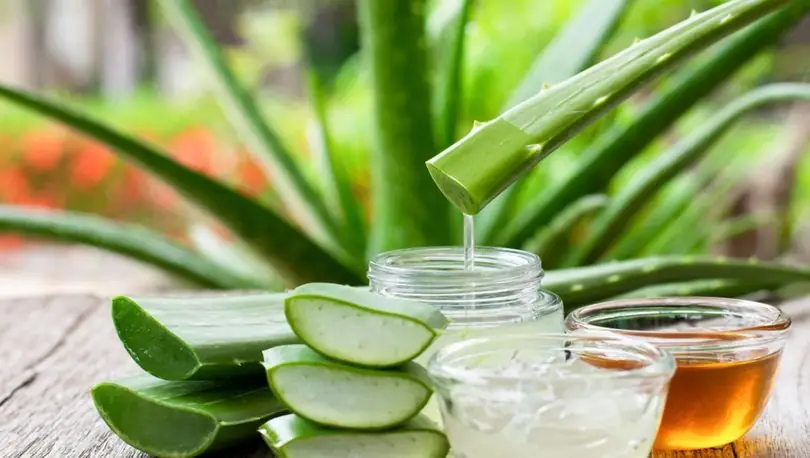
Well-known for its thick prickly leaves, this plant is widely used in traditional medicine. What is the main benefit of aloe vera? How can you use this remarkable plant? Can you grow it at home? Who should avoid drinking its juice?
Read on, and you will find the answers to all these and numerous other questions.
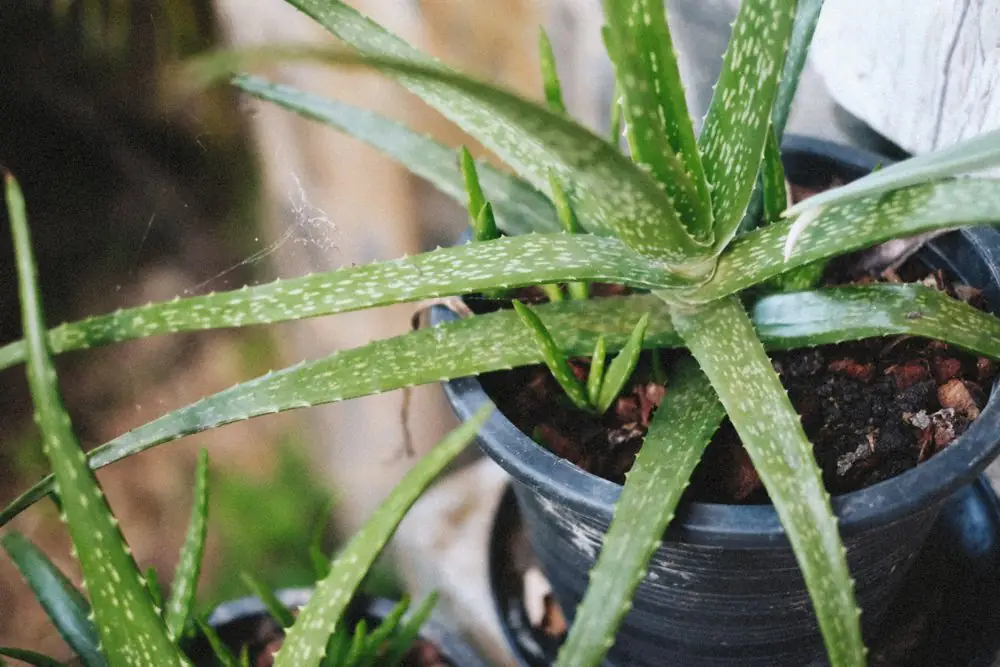
What Is Aloe Vera Used For?
Aloe vera is a succulent that has been used for medicinal purposes for thousands of years: there is evidence that it was known to ancient Egyptians who applied it to wounds and burns. Native to the Mediterranean, these days this plant is grown in tropical and subtropical climates all over the world.
Using aloe vera is very easy: you can either grow the succulent and harvest it for the leaves or buy one of the numerous health products that feature the plant’s juice and gel.
Here are some of the numerous health benefits of this remarkable succulent:
- A 2013 study demonstrated that aloe vera gel is a viable alternative remedy for treating superficial burns as it offers both fast wound healing and good pain relief. Another 2009 study concludes that due to the plant’s antimicrobial and antifungal properties, it can be used for wound healing as well as treating human papillomavirus, herpes, psoriasis, stomatitis, frostbite, burns, and skin inflammation;
- In a 2015 study, the juice of the plant was successfully used to improve the symptoms of GERD (gastroesophageal reflux disease), including heartburn and belching. What’s more, a 2018 review demonstrates that this succulent can noticeably alleviate the symptoms of IBS (irritable bowel syndrome);
- In a 2014 study, the juice of the succulent was used as a mouthwash that proved to be effective in removing dental plaque. What’s more, a 2017 study demonstrated that aloe vera toothpaste has the benefit of improving your oral health;
- Both the juice and leaf pulp of the plant were found to help reduce blood glucose levels which can be important for people who suffer from type 2 diabetes and those who were diagnosed with pre-diabetes;
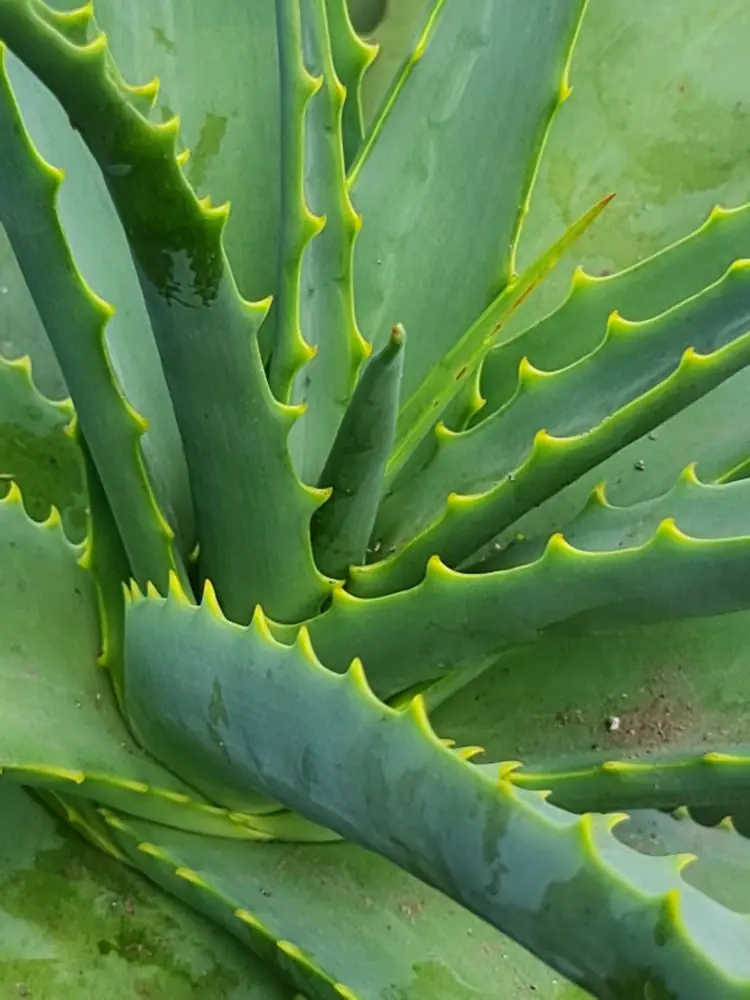
- This succulent contains aloin, a complex organic compound that demonstrates anti-inflammatory and antioxidant activity. In a 2014 study, the gel of this succulent was found to have antibacterial properties against various Helicobacter pylori strains.
- Aloe vera supplements were found to improve skin elasticity and noticeably reduce the appearance of wrinkles;
- A 2014 study shows that the gel of the plant can be used as a supplementary treatment for mild to moderate acne;
- The juice of the plant contains organic compounds called anthraquinone glycosides: they are believed to have laxative effects and may alleviate constipation. Still, studies on this subject are obsolete, and it is uncertain whether using aloe vera juice as a treatment for constipation is safe.
It also needs to be said that this succulent contains vitamins C and E as well as several important dietary minerals.
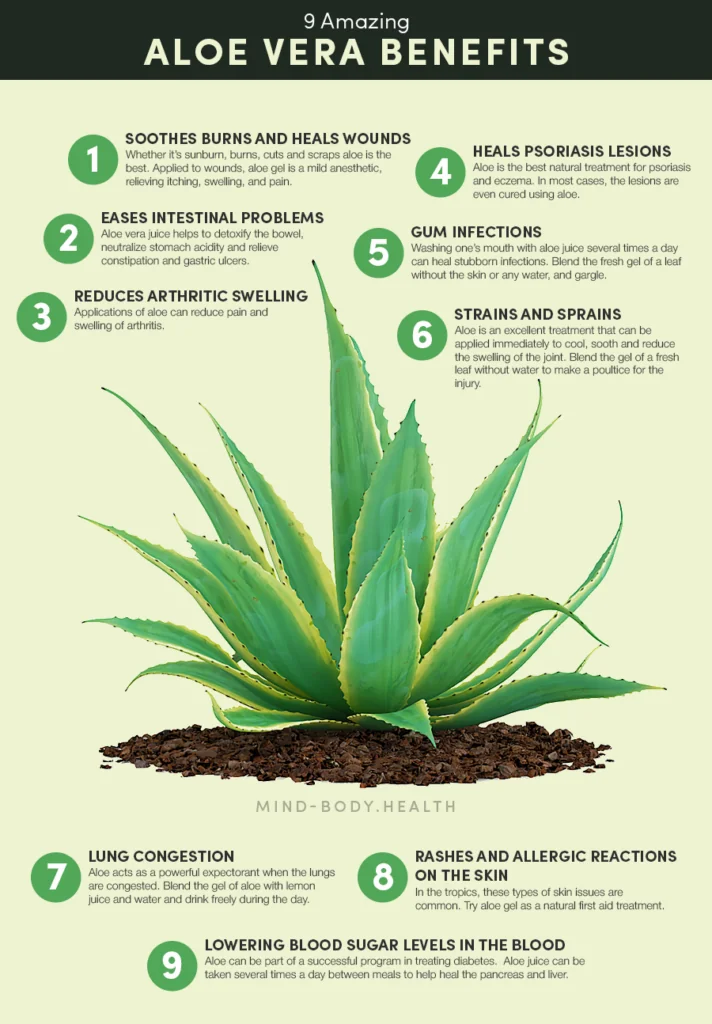
Is It Safe to Use?
You can use the juice or gel of this plant either topically or internally.
Topical Use
The topical use of this succulent is safe for most people. Still, while a very good choice for non-serious skin issues like superficial burns and mild acne, this plant should not be used for severe cuts or serious burns.
People who have an allergy to such plants as onions, tulips, or garlic should avoid using aloe vera. To be on the safe side, if you have never applied this succulent to the skin, perform the patch test first to find out whether you are allergic to it.
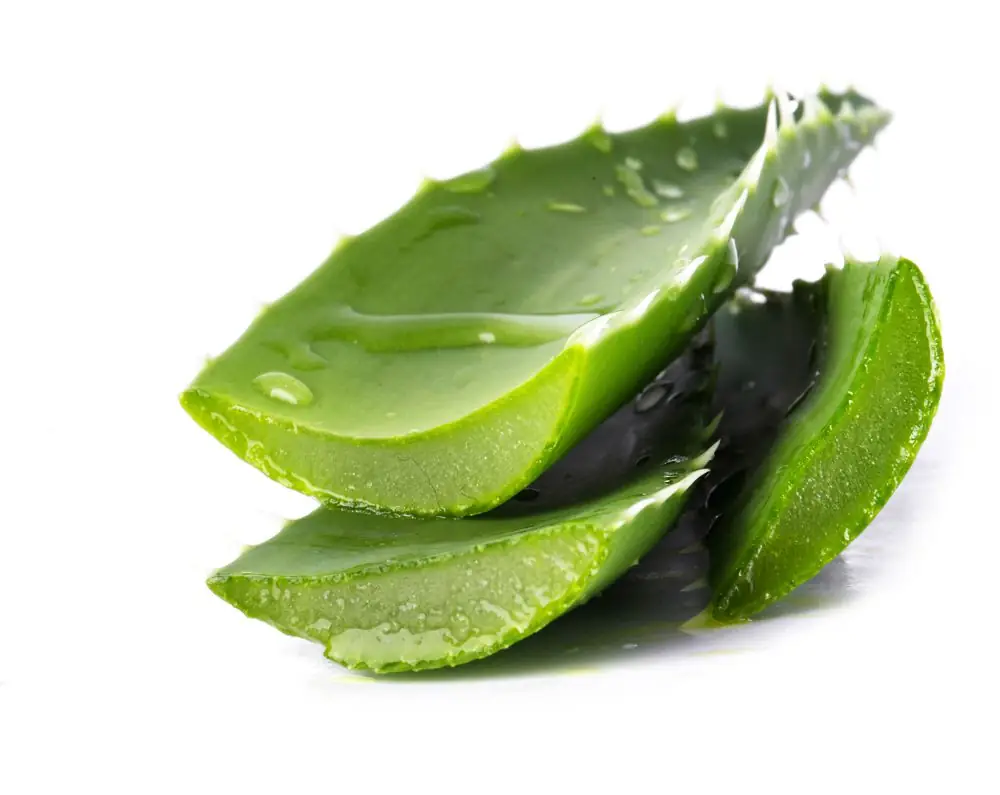
Internal Use
When using aloe vera gel or latex internally, be sure to carefully follow the dosage instructions and limit your use to short periods of time. You might also benefit from taking a break of at least one week after several weeks of use of the gel.
It’s important to note that the laxative properties of aloe vera gel or latex may lead to diarrhea and abdominal cramps: always start with small doses and increase them slowly to make sure that you experience no adverse effects.
The use of this plant can interfere with the absorption of oral medications and reduce their efficacy. Consult with your doctor whether it is safe for you to use the gel of this succulent internally if you are taking any of these medications:
- diuretics (medications that cause increased passing of urine);
- corticosteroids;
- laxatives;
- medications for diabetes;
- anticoagulants (like warfarin).
Do not use aloe vera internally without consulting your doctor if you have any of these health conditions:
- diabetes
- ulcerative colitis
- hemorrhoids
- kidney conditions.

Children under the age of 12 as well as pregnant and breastfeeding women, should avoid taking aloe vera orally.
Lastly, always purchase your dietary supplements from reputable brands to ensure quality and safety.
What Is Aloe Vera Leaf and Soothing Gel
Just like many other succulents, aloe vera is rather easy to grow at home. What this plant needs are sunlight (six to eight hours per day) and infrequent (about once per week) watering. Determine how dry the soil is using your fingers: if it is dry for 2 inches (5 cm), it is time for watering.
Make sure there are holes on the bottoms of your pots: this succulent doesn’t like to be overwatered and will only benefit if there is no excess humidity in the soil.
In case you don’t know which part of aloe vera is used, it is thick prickly leaves that you can use for medicinal purposes. Here is how to harvest this plant for leaves the right way:
- Only use mature plants that are at the very least two (preferably three) years old.
- Do not cut the leaves from the same plant more often than once per month.
- Use thick leaves that are far from the root; make sure there is no mold on them, and they are not damaged in any other way.
- Cut the leaves at their base where the concentration of beneficial compounds is the highest. Make sure that you do not damage the stem and the root of your plant.
- Wash the leaves you have cut, let them dry, and use a small knife to cut off the prickly edges.
- Use the knife to cut the leaf in two along its length. You should get easy access to the interior gel of the plant.

- Detach the gel from the outer part of the leaf and cut it into cubes or slices. You can also put the gel into the blender and then strain the blended substance.
- The gel naturally contains preservatives that help it stay fresh (if stored in the refrigerator) for about 1 week. Do not use it after this term is over.
- To extend the shelf life of your gel up to 2 months in the refrigerator, blend it with powdered vitamin C or powdered vitamin E (or with both these vitamins). The proportion is 1 gram (1,000 mg) of vitamin C and 800 IU (International Units) of vitamin E per ½ cup (120 ml) of gel.
Topical Use
What are benefits of aloe vera gel for the skin? The gel you obtain from the leaves is a well-known traditional remedy for superficial burns, sunburns, frostbite, and small cuts. What’s more, if you suffer from acne, you can use this succulent for face masks and scrubs and get a substantial benefit from the plant’s antibacterial properties.
- Mix together aloe vera (1 tablespoon), honey (2 tablespoons), and ground cinnamon (¼ tablespoon). Apply the mask to your face, wait for 10 minutes, and rinse it thoroughly. All three ingredients of this mask are known for their antimicrobial action: use the mask to fight off acne-causing bacteria;
- Mix together lemon juice (¼ tablespoon or even less) and aloe vera (2 tablespoons). Make sure you do not overuse lemon juice: excessive acidity can irritate your skin and make it dry. Apply the mask to your skin for no longer than 10 minutes: it has the important benefit of cleaning your pores and killing harmful bacteria. Rinse the mask off completely using running water.
- Mix together the coconut oil (½ cup), white or brown sugar (½ cup), and aloe vera (¼ cup). Use this mixture to gently scrub your face (avoid using it near your eye area). Sugar will exfoliate dead outer cells and allow the humidifying antibacterial gel to penetrate deep into your skin; coconut oil is also known for its antimicrobial properties.
If you don’t have the leaves of the plant at hand, you can use this 100% gel:
100% Aloe Vera Gel by Fruit of the Earth
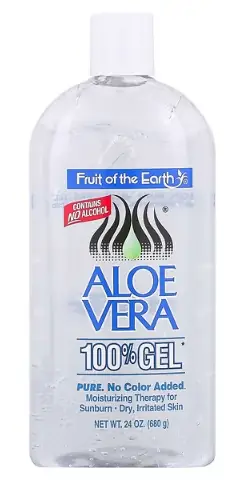
- Extracted from fresh leaves
- 100% pure
- 680 g (24 oz)
Internal Use
If you want to gain firsthand knowledge of what is the main health benefit of aloe vera drink & juice, you can easily prepare this healthy beverage using the gel you have extracted from the leaves of the plant. All you need to do is add gel to water, fruit juice, or any other liquid like green tea: the proportion is 1 cup of water to 2 tablespoons of plant gel.
If you have never tried this gel before, do not start from more than 2 tablespoons of it per day as it can sometimes lead to adverse side effects (diarrhea and abdominal cramps being the most common).
Even if you are not much of a gardener, you can still find what health benefits does aloe vera have by buying leaf juice from the plant on iHerb.
Aloe Vera Leaf Juice by Nature’s Way
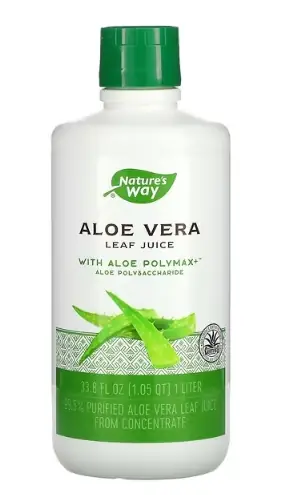
- 1 liter (33.8 fl oz)
- Easy to use
- Reputable brand
If you don’t like the taste of the juice but still want to find out for yourself what are the benefits of aloe vera leaf, you can use easy-to-swallow soft gels.
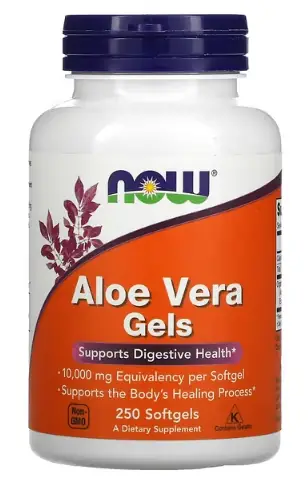
- 250 softgels (enough for 125 servings)
- Each softgel equals 10 grams of pure plant gel
- Well-known manufacturer
FAQ
In this section, you will find the answers to the commonly asked questions about this remarkable plant.
What Is Known About the Benefits of Using Aloe Vera Gel on Face and for Hair?
When applied to the skin, the gel of this plant can speed up minor wound healing, reduce inflammation, and improve the symptoms of papilloma, herpes, and psoriasis. In traditional medicine, it is very often used for treating superficial burns, frostbite, and sunburn.
If you suffer from acne, you can also use the gel of this succulent for antibacterial face masks and scrubs.
What are the benefits of aloe vera for hair? It can reduce scalp inflammation caused by dandruff and efficiently clean oily hair. There is also anecdotal evidence that the major benefit of the gel of this plant is that it promotes hair growth and prevents hair loss. Unfortunately, there are not many scientific studies that would support these claims.
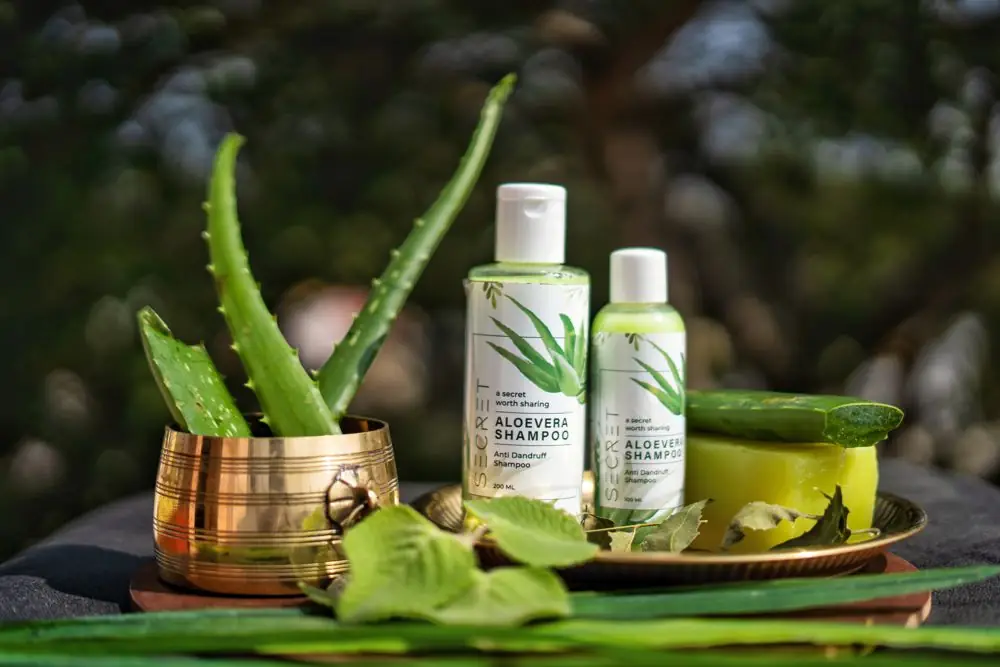
What Is Known About the Benefits of Drinking Aloe Vera Water?
This healthy beverage:
- Has the important benefit of reducing heartburn and belching: two frequent symptoms of gastroesophageal reflux disease;
- It can be used as a mouthwash (especially if you want to remove dental plaque);
- Has laxative effect;
- It was demonstrated to reduce blood glucose levels (this benefit is especially important for people with pre-diabetes).
What Is Known About the Benefits of Aloe Vera with Honey for Skin?
As both these natural products have antibacterial properties, they can be used for face masks that treat acne caused by bacteria. While the potency of these natural remedies is limited compared to prescription medications, they have proven to be very safe and have very few side effects. So, if you suffer from mild to moderate acne, you might want to try one of the above-described recipes for face masks.
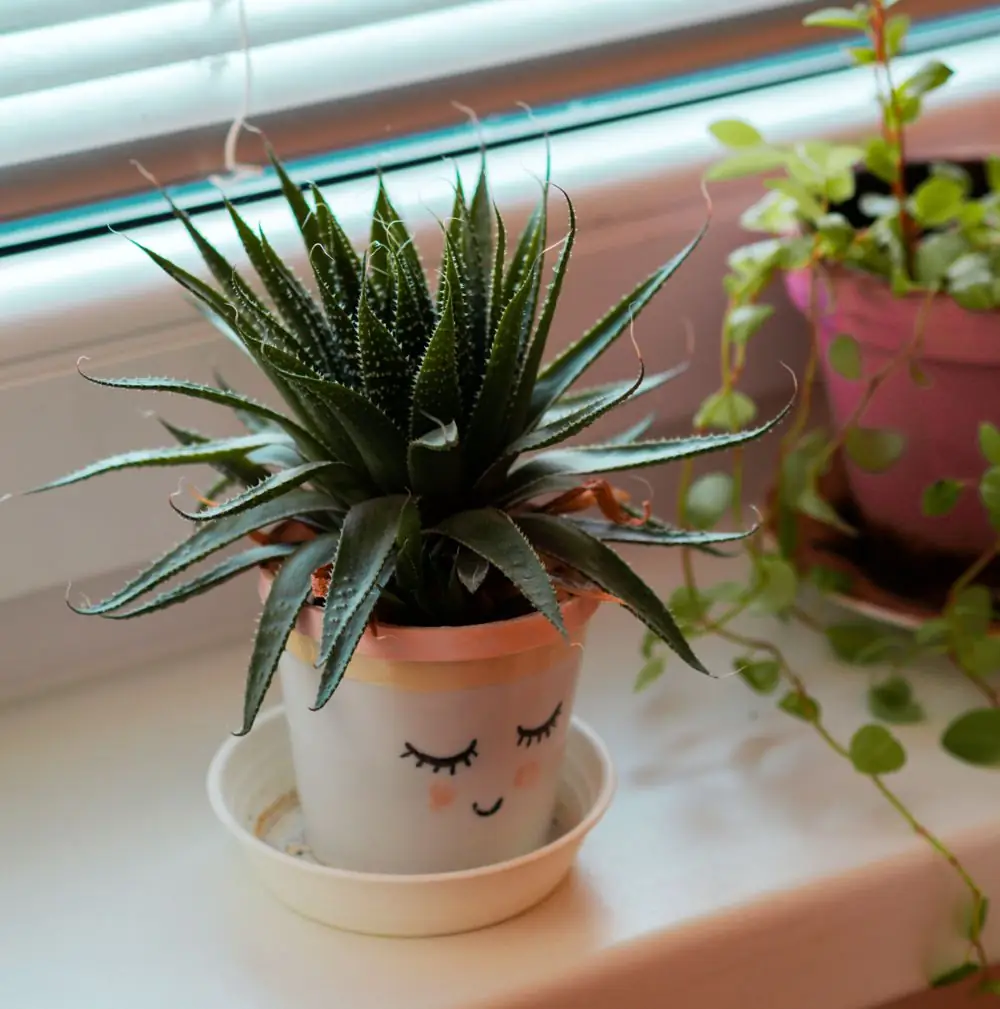
Now you have enough information to decide for yourself what is the main benefit of aloe vera. This remarkable plant can be used both topically and internally: grow it at home or buy it from a reliable manufacturer. No supplement, plant, or food, however, is a magic bullet: if you have to deal with a severe medical condition, consult with an experienced healthcare practitioner.